I had an opportunity to watch some FD bottles get hydro'd so, I thought I'd share the process with all of you.
The first thing the tech will do is perform a visual inspection of the outside of the tank.
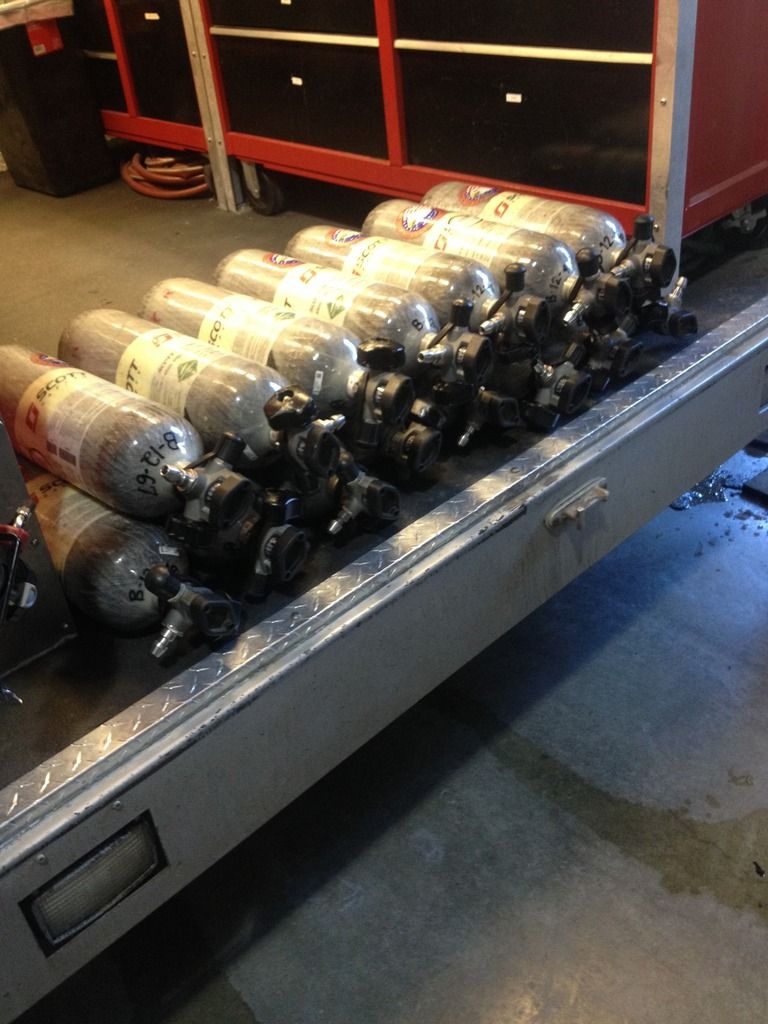
The next thing is to jot down the bottle info for his company's records.
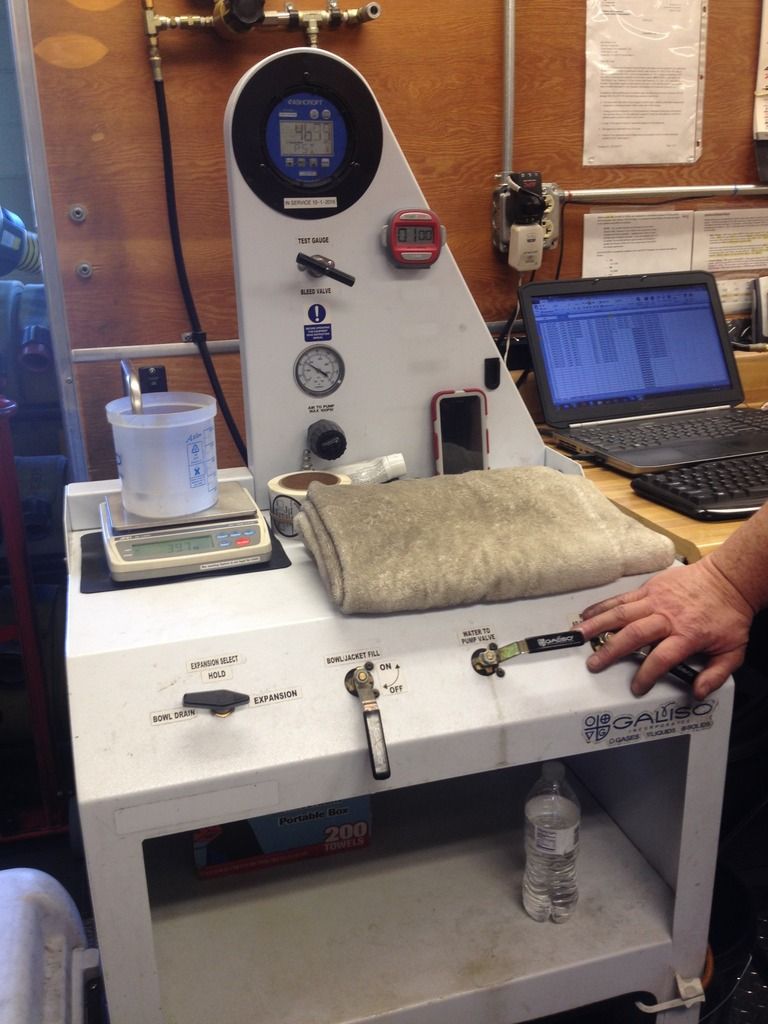
Then he pulls the valve off the bottle and takes a peek inside. (sorry no pic but, there's not much to see. They're silver inside.)
The next step is to fill the bottle with water and attach it to his lift assist. They're not particularly heavy but, this keeps them upright for filling with water and avoids an accidental drop.
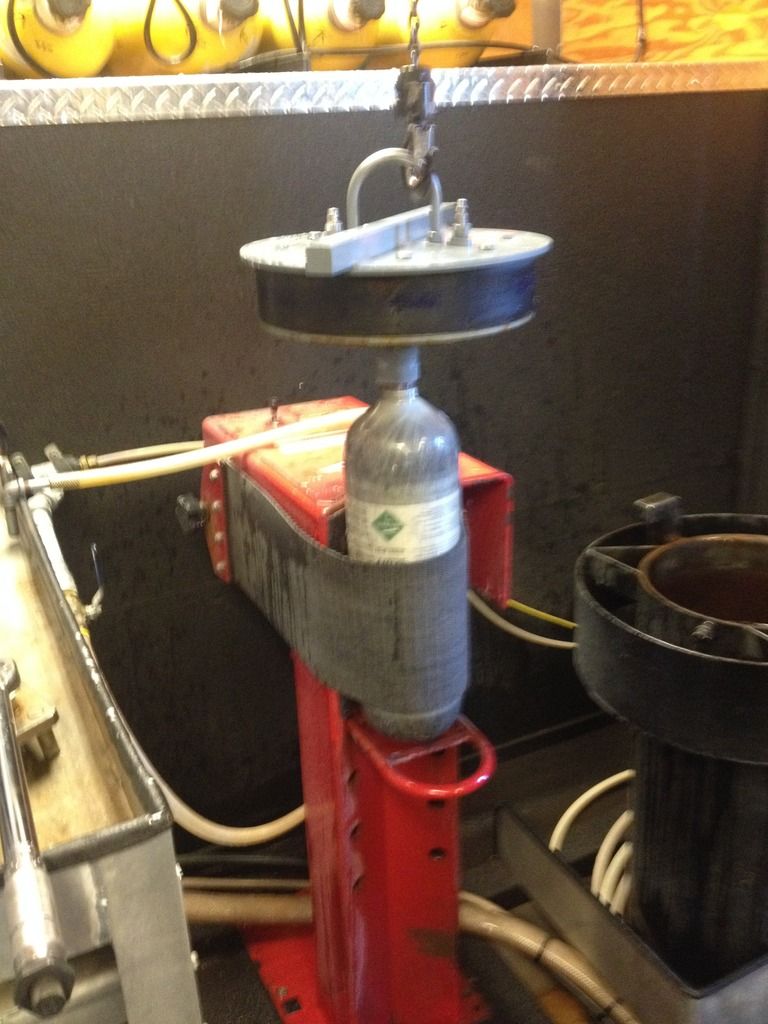
Down into the dunk tank it goes. The water will be topped off and the lid locks in place.

Now he pressurizes the tank to ~7500 psi. DO NOT ATTEMPT! These bottles will not hold for very long at those pressures!
When he does this, the bottle expands.
There is a hose that goes from the outside water to a little measuring cup on his workbench. When the bottle expands it pushes a small amount of this water out and up the tube. He notes the level of the water before the pressure, then he notes the level of the water during pressurization, and once more when he lets the pressure off. He's only at 7500psi until the expansion of the bottle settles. Then he cuts the pressure off. This is only takes about 3-5 seconds.
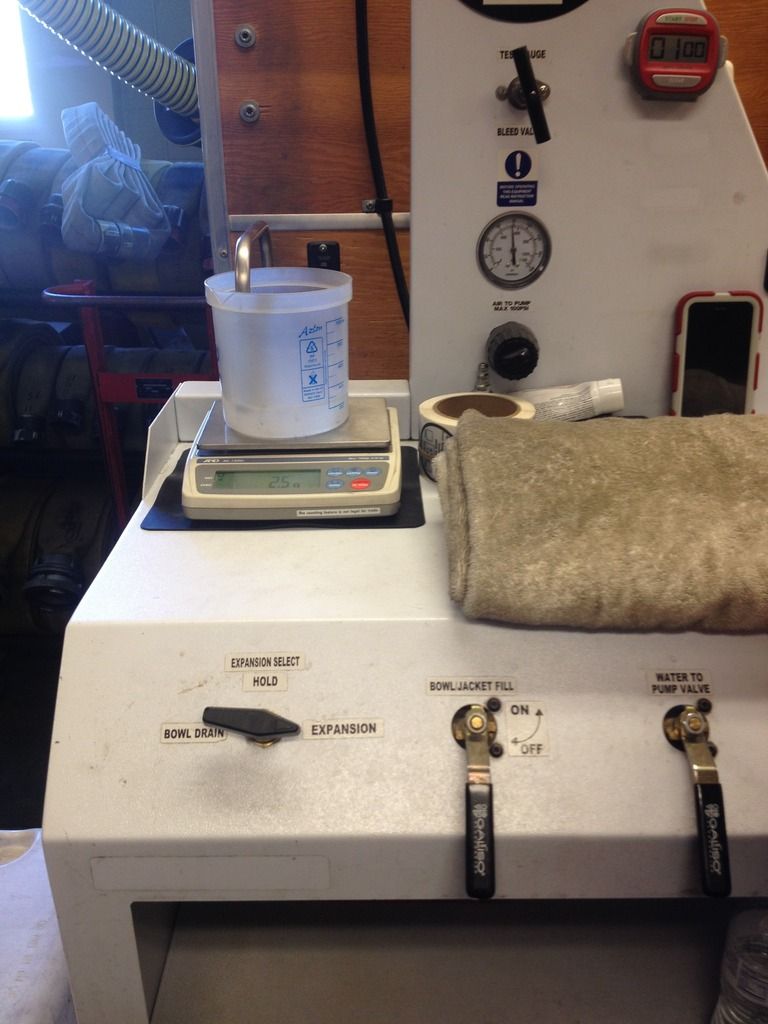
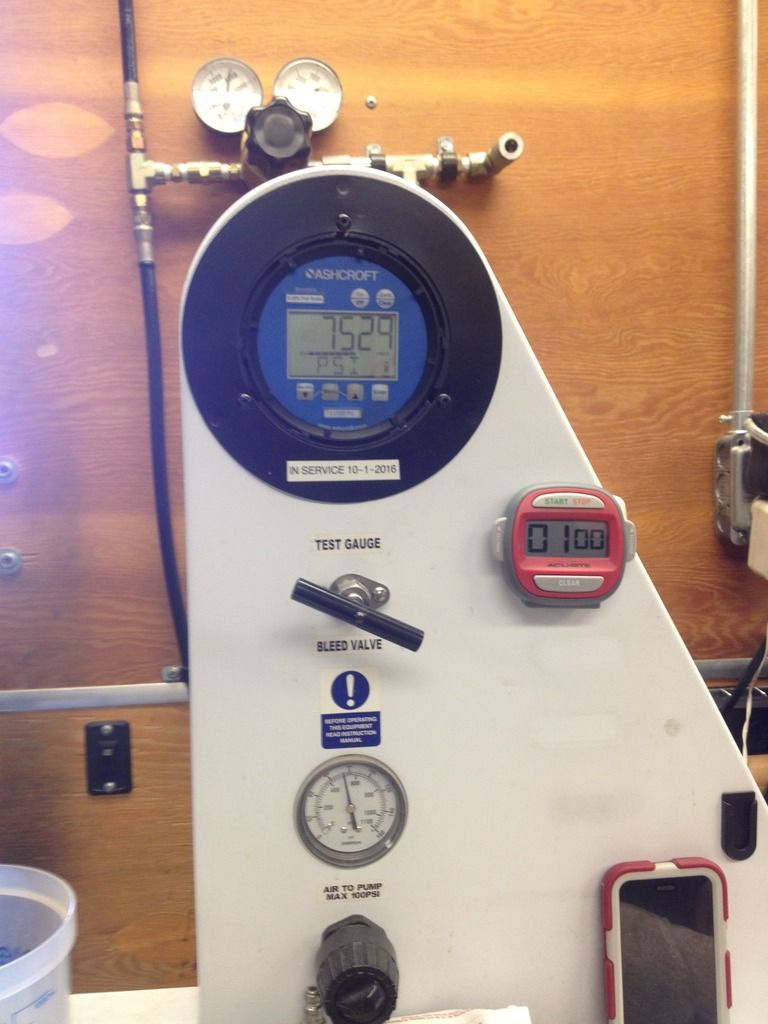
Now the attachment comes off the bottle and it is turned upside down to drain the water out. There's tubes blowing warm air into the bottles to speed up the process.
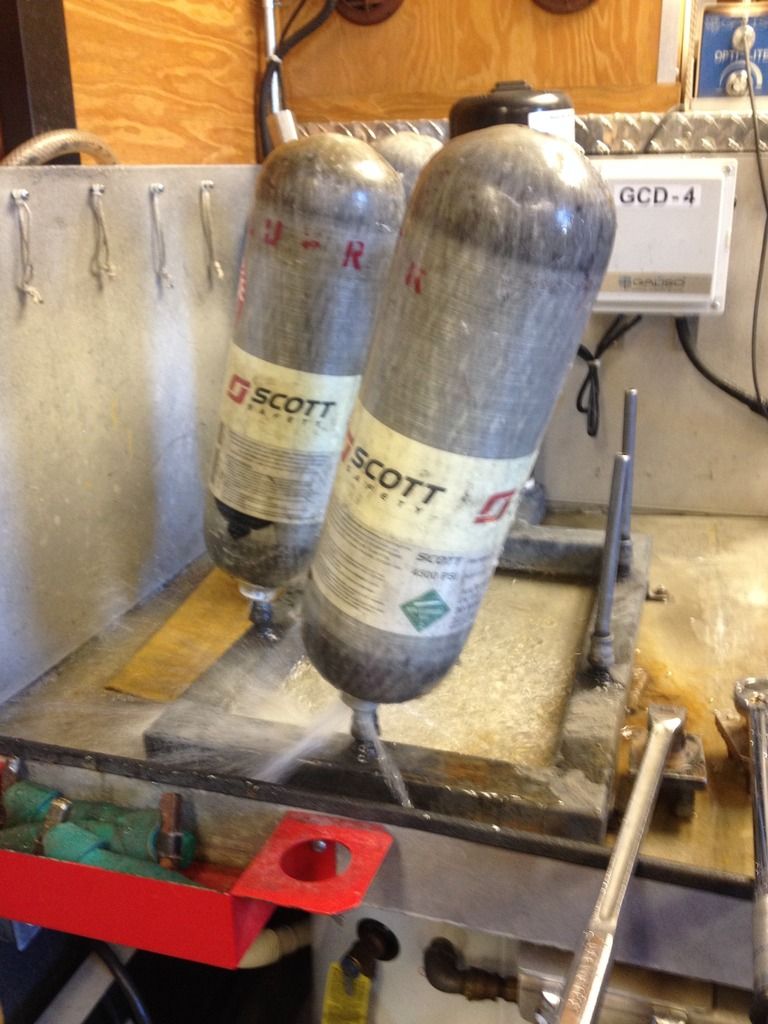
Once that is completed, he writes up a label and epoxies it to the outside of the bottle.
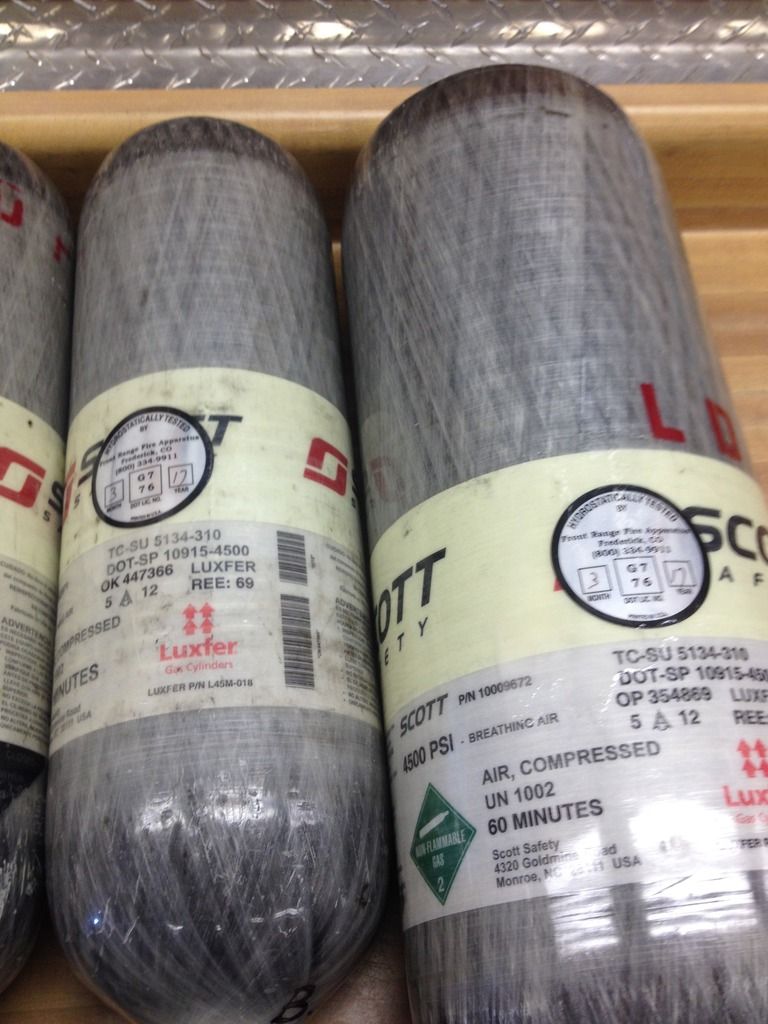
The o-ring gets replaced and the valve is screwed back on. 100ft lbs (If I remember correctly). (That little brass tube is the reason why turning the bottles upside down and opening them will not drain them.)
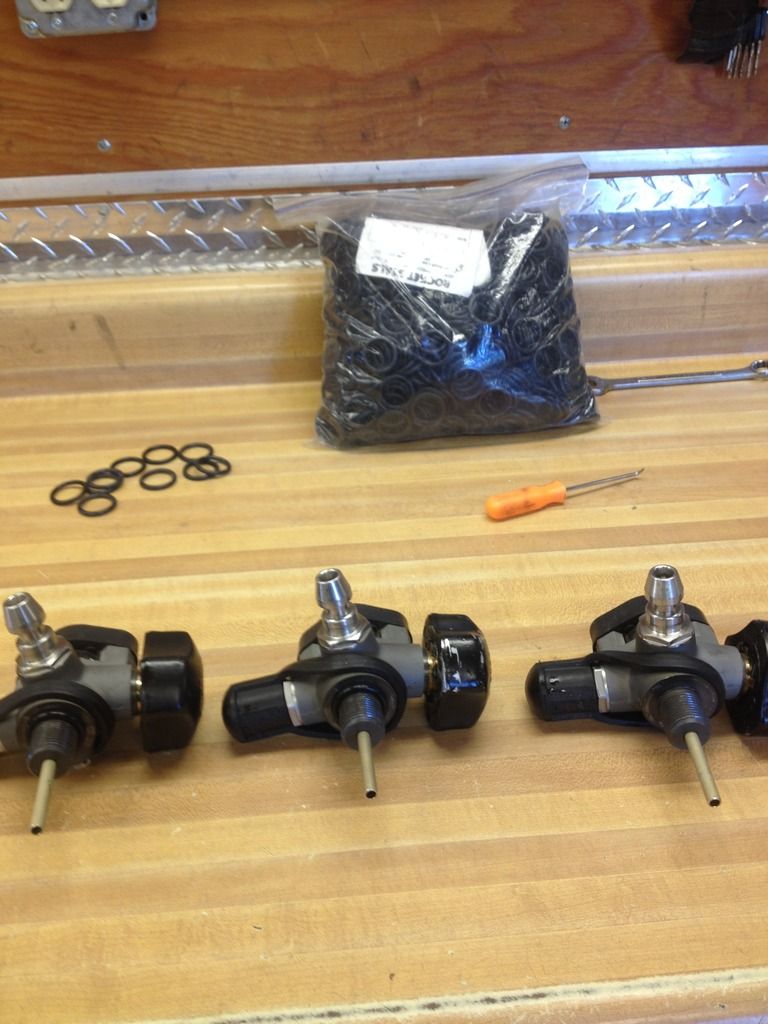
The bottle is now hydro'd! Ready for a fill and another 5 years of service.
Thanks goes to Bob and best wishes for your retirement!
Tom
The first thing the tech will do is perform a visual inspection of the outside of the tank.

The next thing is to jot down the bottle info for his company's records.

Then he pulls the valve off the bottle and takes a peek inside. (sorry no pic but, there's not much to see. They're silver inside.)
The next step is to fill the bottle with water and attach it to his lift assist. They're not particularly heavy but, this keeps them upright for filling with water and avoids an accidental drop.

Down into the dunk tank it goes. The water will be topped off and the lid locks in place.

Now he pressurizes the tank to ~7500 psi. DO NOT ATTEMPT! These bottles will not hold for very long at those pressures!
When he does this, the bottle expands.
There is a hose that goes from the outside water to a little measuring cup on his workbench. When the bottle expands it pushes a small amount of this water out and up the tube. He notes the level of the water before the pressure, then he notes the level of the water during pressurization, and once more when he lets the pressure off. He's only at 7500psi until the expansion of the bottle settles. Then he cuts the pressure off. This is only takes about 3-5 seconds.


Now the attachment comes off the bottle and it is turned upside down to drain the water out. There's tubes blowing warm air into the bottles to speed up the process.

Once that is completed, he writes up a label and epoxies it to the outside of the bottle.

The o-ring gets replaced and the valve is screwed back on. 100ft lbs (If I remember correctly). (That little brass tube is the reason why turning the bottles upside down and opening them will not drain them.)

The bottle is now hydro'd! Ready for a fill and another 5 years of service.
Thanks goes to Bob and best wishes for your retirement!
Tom